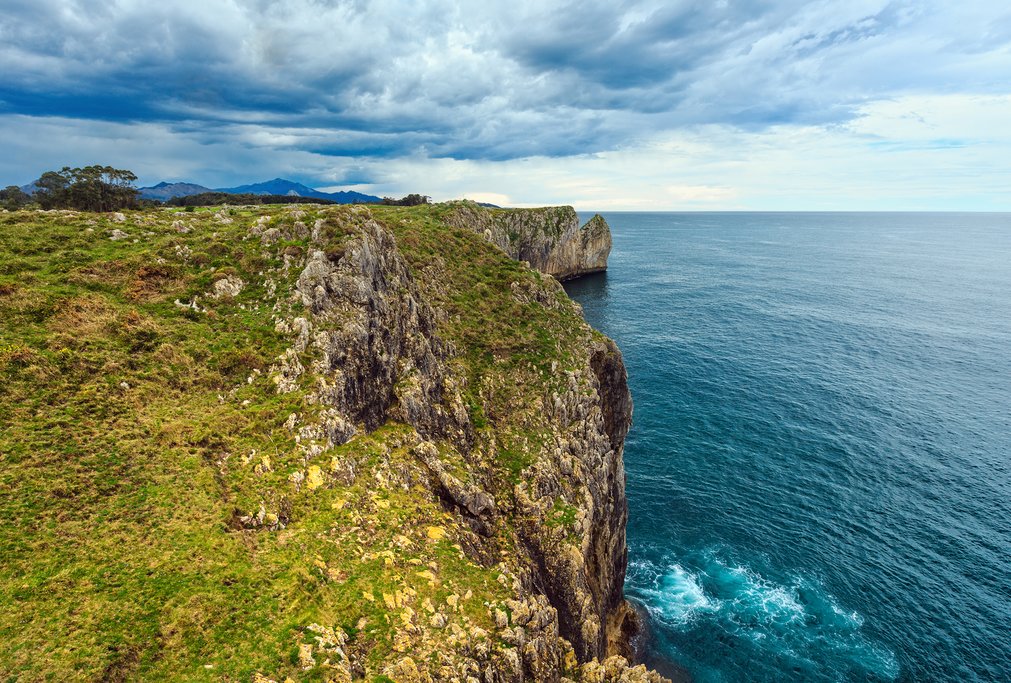Brief itinerary
| Day | Highlights | Overnight |
|---|---|---|
| Day 1 | Explore the city of Bilbao | Bilbao |
| Day 2 | Visit the Coast of Biscay & Getaria | Getaria |
| Day 3 | Txakoli, Elkano, and St Ignatius | San Sebastian |
| Day 4 | Discovering San Sebastian | San Sebastian |
| Day 5 | Hike through Ulia Mountain to Pasajes de San Juan |
Day 1: Bilbao

Begin with a walking tour of Old Town. This is the beating heart of Bilbao, home to the oldest landmarks as well as many bars, restaurants, and boutiques. Major sights include the 18th-century Church of San Nicolás and the 16th-century Church of San Antón, which is dedicated to Anthony the Great, an Egyptian saint and the father of monasticism. Other notable sights include the 14th-century Cathedral of Santiago and the Mercado de la Ribera, which, at 107,639 square feet, is the largest covered marketplace in Europe.
No visit to Bilbao is complete without stopping in at the Guggenheim Museum, a masterpiece of contemporary architecture by the legendary Frank Gehry. This glimmering titanium structure looks more like a sculpture than a building, with its sleek lines sensually curving in virtual defiance of physics. Inside, the museum's 24,000 square-meter space houses a treasure trove of works from great artists such as Andy Warhol, Anish Kapoor, Jeff Koons, Louise Bourgeois, and Eduardo Chillida.
Day 2: Coast of Biscay & Getaria

Starting from Bilbao, we will go to Donostia through the amazing Coast of Biscay. On your way, visit the impressive World Heritage Bridge of Biscay, Getxo, the astonishing San Juan de Gaztelugatxe island, Bermeo, Mundaka, and the famous village of Gernika.
In the afternoon, right by the ocean, the pretty town of Getaria will be your host town for tonight. After an intense and very interesting day, time to enjoy an amazing dinner in one of the very prestigious restaurants of this charming fishing town where the best fish of the region is prepared on the barbecue.
Chat with a local specialist who can help organize your trip.
Day 3: San Sebastian

In the morning you'll meet a private guide and enjoy a half-day guided tour of San Sebastian. Walking around will give you a sense of the layout of the city, which lies on the Bay of Biscay and is nestled amid rolling green hills. The tour will take you around the famous Parte Vieja ("Old Quarter"), which is situated in the east of the city between the ocean and the River Urumea.
There are many other landmarks and buildings you can choose to see on the tour. At the edge of Old Town is the iconic San Sebastian City Hall. Constructed in 1887, it used to be the Gran Casino during the Belle Époque period until it was closed in 1924. The building still overlooks the bay, from where an elegant promenade with railings and street lamps runs along the crescent-shaped La Concha Beach.
For great views looking back at San Sebastian, take a ferry to the famous offshore island of Santa Clara, or ride a funicular up to Mont Igualdo, which offers even more sweeping panoramas. You might also stroll the banks of the Urumea River, where you'll find the 19th-century Victoria Eugenia Theatre, the palatial Maria Cristina Hotel, and many aristocratic houses dating to the turn of the 20th century. You can get some good pictures walking across the Puente María Cristina, the bridge that crosses the river.
After touring the city, you can indulge in San Sebastian's celebrated food culture. The area specializes in a type of tapas called pintxos (pronounced "peenchos"). Most bars, cafés, and restaurants in the Parte Vieja serve some version of these bite-sized delicacies, and naturally, they're best paired with some delicious local wines. Here it's possible (and indeed encouraged), to hop from pintxos bar to pintxos bar, grazing until your heart's content.
Day 4: Day Trip to the Basque Countryside

In the morning, you'll meet your guide and drive into the mountains outside of San Sebastian for an active four-hour countryside tour. During this pleasant drive, you'll get an overview of rural Basque culture and gain insight into a region whose residents have traditionally lived in mountain farms called caserios. Even today many locals live in small villages in the foothills, raising sheep and cows, making cheese, and generally living off the land.
The real cultural experience begins when you arrive at a local farm. The farm's owner will accompany you on a tour of the property, and you'll get a firsthand lesson in cheesemaking. This covers the whole process, from milking the cows to aging the cheese the traditional way, in caves. You'll have contact with the farm animals and even watch how sheepdogs herd the flock. It culminates with a homecooked country lunch made from fresh local produce and, of course, accompanied by delicious Basque cheeses.
Day 5: Pasajes de San Juan & Hondarribia

Pasajes San Juan — or Pasai Donibane in Basque — is a small village located just 6 miles (10 km) from San Sebastian. It is part of a larger region called Pasajes, composed of San Juan, San Pedro, Antxo, and Trinxerpe located around a river and surrounded by mountains and sea.
Without a doubt, the most beautiful village in the Pasajes complex is San Juan. Upon arrival, visitors will notice the strong fishing tradition of this beautiful town as well as the strong Basque character of its people.
We will get to this beautiful village on a very enjoyable hike through Ulia mountain. A drink and a snack in a local fishermen bar interacting with locals is the best reward for your day's efforts.
In the afternoon, you'll have time to explore the lovely town of Hondarribia, located right on the border with France.
